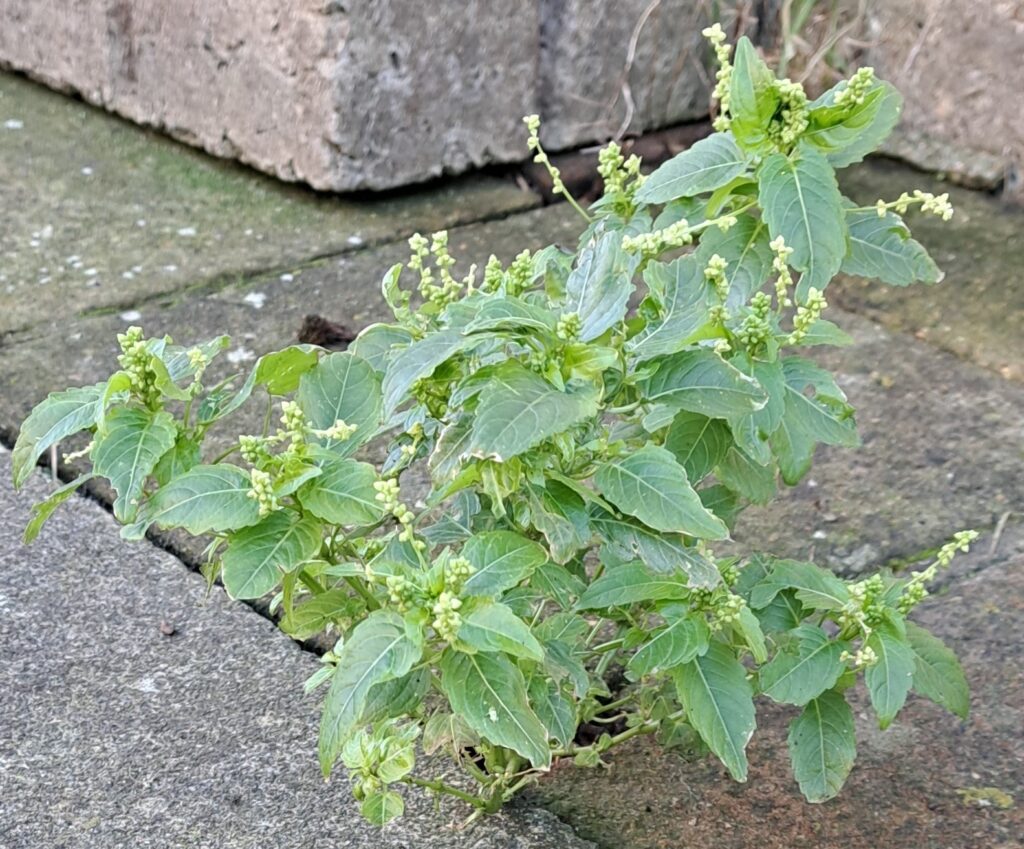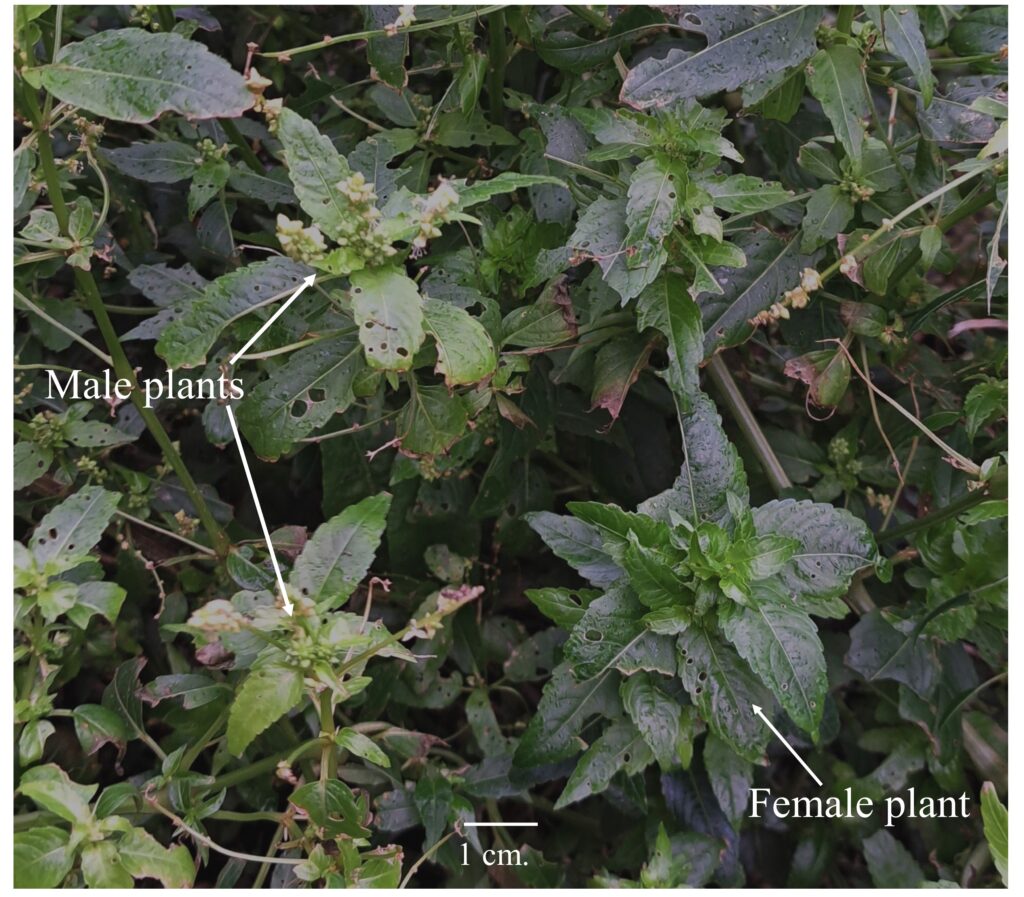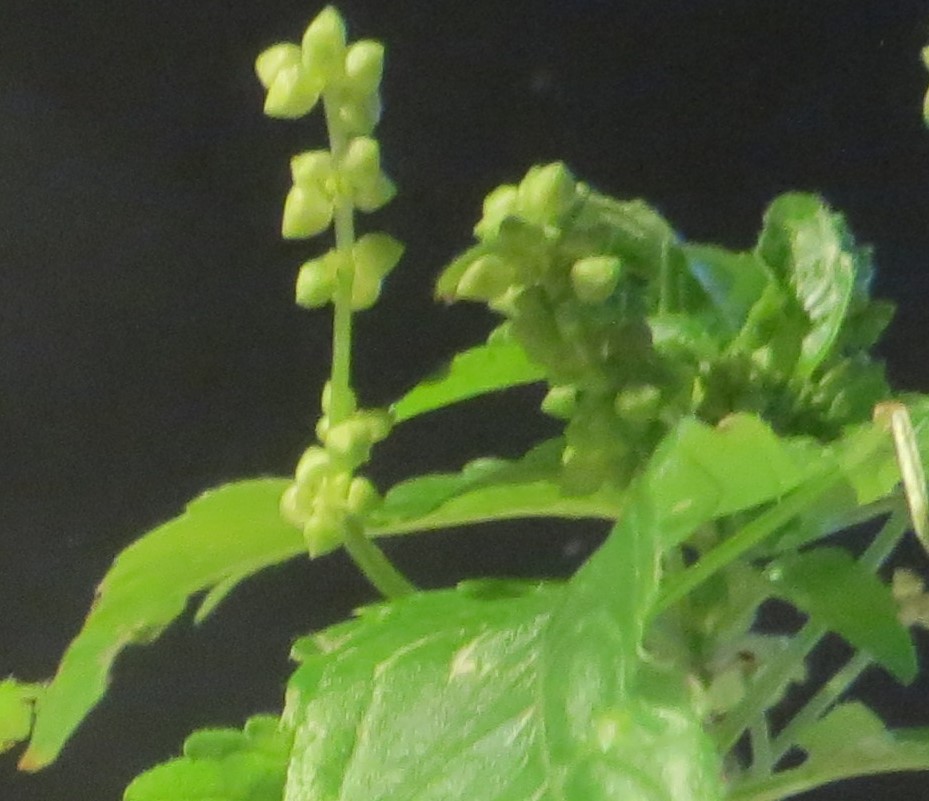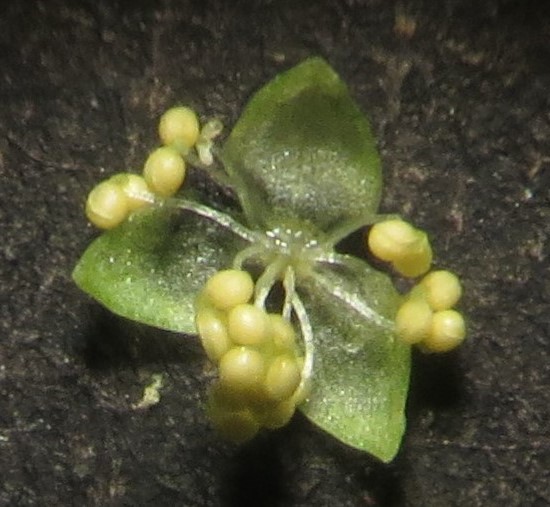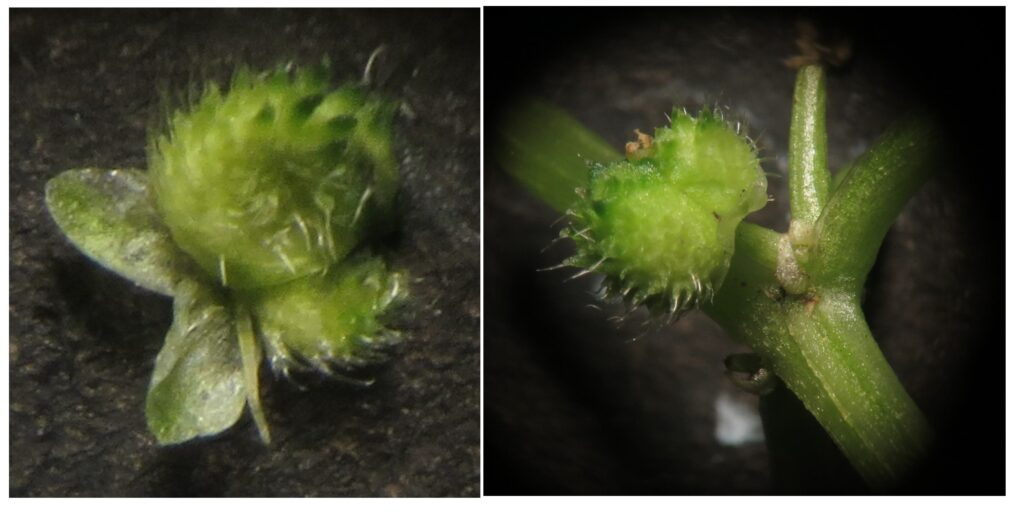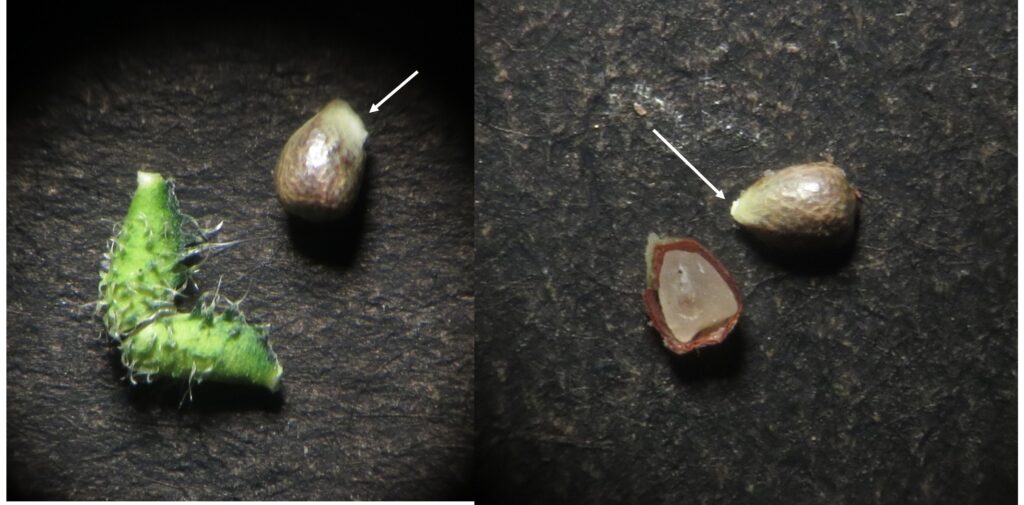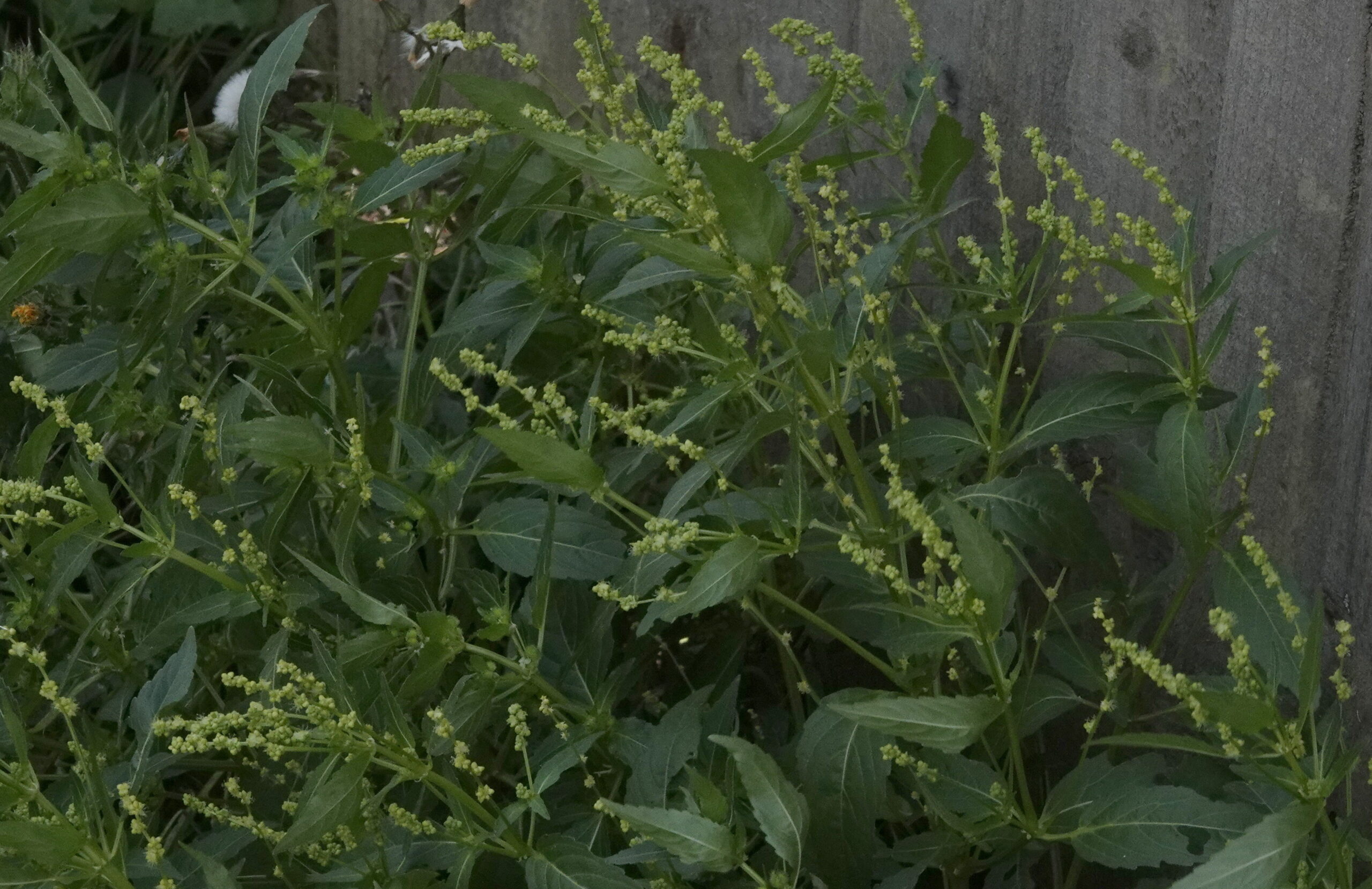Common name : Annual Mercury
Latin name : Mercurialis annua
Member of the Spurge family (Euphorbiaaceae)
Annual Mercury is a common “weed” in many Seaford gardens, coming up when the soil is disturbed or cultivated for seed sowing. The seeds may have been awaiting their moment for months or even years and then germinate profusely, swamping whatever was in your seed packet. Hence it is easy to despise this weed. In fact, you are dealing with a plant that is currently having great success and its story of survival and spread (admittedly helped by man) to far beyond its original home in the dry sandy soils of the Eastern Mediterranean is very interesting.
Given that origin, seeing it in flower in pavement cracks and flower beds in midwinter, here in Seaford may come as surprise but, although individual plants are only annuals, there are nearly always some in flower throughout the year.(fig 1)
There are two species of Mercury in British Isles. The perennial Dog’s Mercury[1] and the Annual Mercury that is described here. The perennial species may come up in flower beds but is more typically a woodland plant.
A Dioecious species!
Both species are dioecious, that is they bear male or female flowers on separate plants. In the mixed group of plants shown in Fig. 2 the males are more obvious with their upright spikes of tiny pollen bearing flowers. The female plants look rather darker and dull. In fact their fruits are hidden amongst the leaves and look like miniature horse-chestnuts.
[1] “dog’s” in this context means inferior (to Annual Mercury). For example, it has no safe herbal use because it is poisonous.
Figure 3 shows flowers from a male plant. The perianth of each flower consists of 3 “tepals”, the term used when sepals and petals cannot be differentiated. These open to expose a cluster of pollen bearing stamens. The pollen may be blown away or collected by insects.
Figure 4 shows close ups from female flowers
Like the males, the female flowers have three tepals but until they have opened to expose the paired fruits, they are much less conspicuous. Fig. 4.3 indicates a withered flower which was not fertilised. Had the fruits formed they would be “superior, that is sitting above the tepals.(inset picture) Instead there are only remains of the flower’s two conjoined pistils (the styles and stigmas)
Figure 5 shows magnified images of the paired female fruits. On the left, two of the three tepals can be seen.
Fruits and germination
The fruits each contain a single seed which has an oil producing structure at its tip. This is called the “caruncle”.(figure 6) In its original home in the Mediterranean this oil is very attractive to ants that collect the seeds and take them back to the nest. After the oil is consumed the seed is added to the ant’s nest refuse area which is an ideal environment for germination. Seeds in which the caruncle is still intact are very slow to germinate and may not do so at all.
Given that the correct species of ant is not present in Seaford (nor in Northern Europe generally) how is the plant so successful here? Apparently, there is a second mechanism that will trigger germination. If the seed becomes and remains wet, the caruncle will just degenerate and fall off. Disturbance of the ground for planting your seeds, completes the requirements This is ideal for British Isles. However, it also needs a mechanism for spreading from its parent plant. When the fruits are mature they will split open and, apparently, the seed may be ejected some distance.
Since it can flower and set seed throughout the year (my pictures were taken in late December) each generation of plants will spead it a little further, together with the wind and animal vectors as well.
It has also been spread by man with cereal seed or vegetable seeds, from its original home. It had reached here by the time of the Vikings (Wikipedia Mecurialis annua.). In Tudor times (see Name section below) Annual Mercury was still mostly found in South Eastern England and even now it is only scattered in the North.[1] By contrast the native Dog’s Mercury is common in woodland and hedgerows over much of Britain, having followed the retreating glaciers 10,000 years ago. Hence it is classed as “Native” while the Annual species is classed as “Archeophyte/colonist”[2]
The name.
In England, the Elizabethan botanist William Turner called it Mercury. He probably took the herbalists’ name from the 1C. C.E. Greek physician Dioscorides who practised in Rome and whose book “De Materia Medica” was still used by herbalists and botanists for centuries. Dioscorides attributed the name to the Romans as “Mercurialis mascula” or “Mercurialis testiculata”. Roman statuettes often show Mercury (Hermes) with prominent testicles.
[1] Stace C. New Flora of the British Isles 4th ed. 2019
[2] An Archeophyte is a plant that arrived on these islands before 1500 but after the separation from Continental Europe. 1500 is chosen because from around and since that date, there have been botanists recording (in print and often with pictures) what plants they found both when and where. Thus, the earlier of these records tell what was growing here then, while the later ones indicate what has arrived since and which are now established residents (Neophytes).
Brian Livingstone
